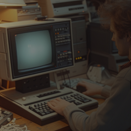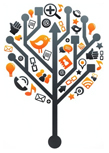
Are legacy systems slowing you down? Outdated technologies in these systems often stifle growth in a number of ways— increasing costs, slower processing speeds, and more security vulnerabilities.
In such a scenario, modernizing them isn’t just an option; it becomes necessity. As more and more businesses seek modernization solutions, the legacy application modernization services market is poised to grow from $15.2 billion in 2022 to $32.8 billion by 2027.
This blog will explore the intricacies of legacy system modernization, challenges in the process, and their respective solutions.
Table of Contents
Identifying a Legacy System
Before moving on to modernization, it is crucial to recognize whether your organization does rely on a legacy system or not. The most prominent features of a legacy system include outdated technologies (COBOL, Visual Basic, .Net, Fortran, etc), rigid architectures, security vulnerabilities, and hardware dependencies.
Unsurprisingly, according to Statista, many of these inefficiencies have become a driving factor for the need for legacy application modernization. Below is a graph illustrating the percentage distribution of these and some other factors influencing this need (as of 2023).

Increased Security: With sub-par security measures, legacy systems are often more susceptible to breaches and cyber threats.
Improved Efficiency: Due to outdated architecture and technology, legacy applications have inherited inefficiencies such as slow processing speeds, high energy consumption, etc., hampering overall productivity.
Cost Reductions: Maintaining legacy systems is typically costly for several reasons, like older components, specialized support, frequent breakdowns, etc., driving up operational expenses.
Better Integrations with Modern Technologies: Legacy systems often pose compatibility issues, making it difficult to integrate with modern applications, APIs, and third-party services.
Increased Agility and Flexibility: Legacy applications are rigid in terms of the programming languages they were built on, hardware dependencies, tightly coupled components, and monolithic architectures, making them less responsive to evolving business requirements.
Lacking Ability to Leverage AI/ML: Legacy systems lack the infrastructure to support advanced technologies like AI, IoT, and ML, preventing them from being an indispensable part of decision-making.
These factors—ranging from security vulnerabilities and operational inefficiencies to high maintenance costs and poor integration capabilities—have paved the way for an ardent need to modernize legacy applications. Addressing these challenges is not just beneficial to overall business performance but has become imperative to survive in today’s responsive, fast-evolving market.
However, there’s a considerable gap between theory and practice. Modernizing legacy systems and applications is an intricate process and you’ll have to circumvent numerous challenges to successfully shift to modern technologies.
Legacy App Modernization: Common Challenges and Their Solutions
The process of modernizing legacy apps is often complex, time-consuming, and resource-intensive. Let’s examine some common challenges that can arise and their respective solutions.

Challenge #1: Outdated Infrastructure and Application Dependencies
The majority of legacy systems are built on outdated infrastructure with several complexities and dependencies. Consequently, this limits their functionality and compatibility with modern-age technologies and development environments. These systems often require specific, older versions of operating systems and middleware, adding to the operational costs
Solution
One intuitive solution to address this legacy software modernization challenge is to gradually refactor the entire application. As the name suggests, it is the process of making incremental updates to parts of an older system (or code), aiming to enhance its performance and ensure it works well with newer technologies.
Note: While the benefits of refactoring are significant, the process itself can be intricate. Moreover, undertaking this transformation all at once, often referred to as a “big bang” approach, can introduce considerable risks and complexities.
Challenge #2: Skill Gaps
Another significant roadblock in legacy system modernization is the lack of skilled IT professionals. This is a two-pronged challenge:
- As legacy systems rely on older technologies, finding IT professionals who are proficient in these outdated languages and frameworks becomes increasingly difficult and costly.
- As companies seek app modernization solutions to integrate (or shift to) modern technologies, there’s a pressing need for skills in newer, rapidly advancing technological stacks.
This discrepancy between the old and new leads to significant delays and increased costs in modernization, as businesses struggle to staff projects appropriately or must invest heavily in training and development.
Solution
To address the above challenge while modernizing legacy software, you can adopt a multifaceted approach:
- Hire and Hone Talent Strategically: You can seek IT professionals with expertise in both legacy and modern technologies. A great way to do this is to offer competitive salaries, career development opportunities, and incentives.
- Adopting Agile Methodologies such as Kanban and Scrum: Adopting an agile approach in the legacy application modernization process allows for continuous improvement through incremental updates. By breaking the project into smaller, manageable sprints, you can gradually implement major updates and code refactors. This method ensures steady progress, making it easier to adapt and refine the system over time.
- Leverage Professional Legacy Software Modernization Services: Another way to bridge skill gaps is by partnering with or outsourcing parts of the application modernization process to a reliable service provider.

Challenge #3: Complexity of Data Migration and Integration
Another legacy system modernization challenge concerns the complexity of data migration and integration with advanced databases or applications. Legacy systems, having operated for many years, accumulate vast volumes of data in outdated formats and structures, often incompatible with the target system. This disparity leads to several other roadblocks, such as data loss & corruption, downtime, security risks, etc., in transferring and integrating legacy data.
Solution
To prevent data loss during the migration of legacy applications, you should implement a phased data migration strategy. Begin by assessing their current data architecture to identify any dependencies. Based on this assessment, pilot migrations can be conducted to test the process on a smaller scale, mitigating potential risks. Once these pilots are successful, data should be migrated incrementally, without causing any business disruptions.
For robust integration, you can utilize middleware solutions to enable seamless data exchange with the new target application/system. You can also develop and implement APIs to enable real-time data access and interaction, providing a standardized method for enhancing interoperability.
Challenge #4: Cultural and Stakeholder Resistance to Change
Resistance to modernizing legacy systems, from both cultural and stakeholder perspectives, is another hurdle in the process. The fear of the unknown, comfort with familiar technologies, and concerns regarding increasing workloads often hold back employees and stakeholders. Moreover, long-standing workflows create a strong inertia against adopting advanced solutions, further fueling their reluctance.
Solution
The only way to overcome this reluctance is effective change management and transparent communication. When strategizing legacy app modernization, you should engage stakeholders from the beginning by making them a part of planning sessions. Additionally, clear and consistent communication about the benefits of modernization should be maintained via regular updates, meetings, and internal memos.
To familiarize employees, you should provide extensive training programs, workshops, and resources to ensure everyone is comfortable with the new systems.
Pro Tip: Implementing incentives and recognition programs, along with Q&A sessions and feedback channels, can significantly help gain stakeholder buy-in and reduce resistance.
Challenge #5: Budgetary Restrictions
The costs associated with outdated systems/applications, including ongoing expenses on hardware and software licenses, are often high, straining the already limited budgets. These financial constraints can delay or push organizations to compromise on legacy application modernization projects and crucial updates.
Solution
Phasing app modernization is an effective approach to dealing with budget constraints. You can identify and prioritize components that need immediate attention and will deliver the highest ROI (in terms of performance, security, and cost savings) when modernized.
Additionally, you can leverage cloud computing as a highly effective solution for modernizing legacy systems, even on a tight budget. Leading cloud platforms like AWS, Microsoft Azure, and Google Cloud offer flexible pricing models, such as pay-as-you-go and subscription plans, allowing businesses to pay only for the resources they actually use. This flexibility makes cloud services cost-effective, particularly for companies with seasonal demands.
Cloud platforms also provide highly scalable infrastructure, enabling you to easily adjust their resources up or down based on current needs without significant upfront investments in physical hardware.
Migrating to the cloud also reduces expenses related to maintaining physical servers and the in-house IT staff required to manage this hardware.

Ready to Modernize?
Modernizing legacy systems is not just about moving to advanced technologies; it’s about future-proofing your business to ensure it continues to run while meeting evolving demands. Right from the very first step of recognizing the signs of outdated applications and understanding what drives modernization to overcome common challenges with strategic solutions, we have provided expert insights to make your transition smooth. If you’re interested in learning more about how modern technologies can reshape your business, get in touch with our experts to start your journey to legacy software modernization.

